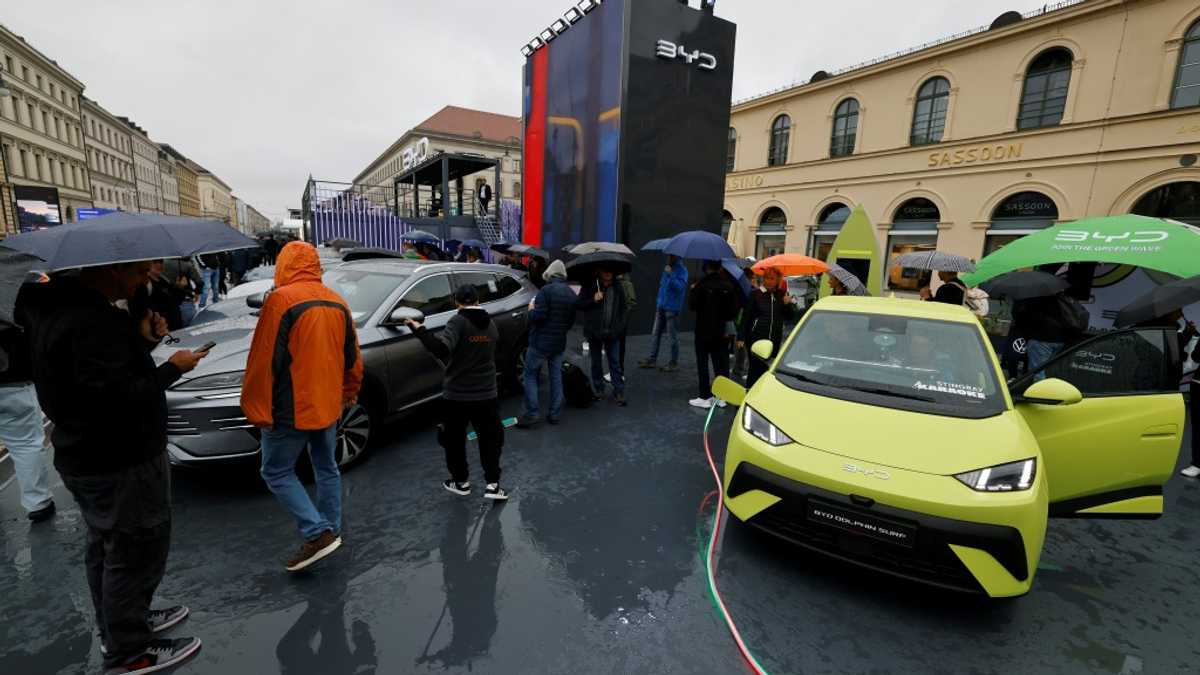
Chinese Electric Vehicles Surge into the European Market
The European automotive landscape is undergoing a significant shift as Chinese electric vehicle (EV) manufacturers aggressively target the continent. The recent IAA auto fair in Munich, Germany, served as a stark illustration of this ambition, with approximately 100 Chinese automotive companies among the 700 exhibitors. These firms, ranging from established giants to emerging startups, are showcasing their technology-rich EVs and signaling their intent to compete directly with European automakers on their home turf.
BYD Leads the Charge
Spearheading this influx is BYD, a major player in the global EV market. The company has experienced a remarkable 250% surge in European sales during the first half of the year. At the Munich auto show, BYD presented models like the Dolphin Surf, a compact EV with a competitive starting price of around €20,000 ($23,400). This price point significantly undercuts many offerings from established European manufacturers, making it an attractive option for budget-conscious consumers.
A Shifting Competitive Landscape
The arrival of Chinese EVs coincides with a period of challenges for some European automakers. Volkswagen, for instance, has faced declining sales and profits due to increased competition and fluctuating demand, leading to announcements of potential job cuts in Germany. Even Tesla, the American EV pioneer, has seen its market share erode, partly attributed to consumer concerns regarding its CEO's political stances.
Factors Driving Chinese EV Growth
Several factors contribute to the rapid growth of Chinese EV manufacturers. These include lower labor costs, substantial government support, and robust domestic demand for advanced technology vehicles. Experts note that Chinese EVs have made significant strides in technology and quality, now rivaling their European counterparts in many areas, often at a more accessible price point.
EU Response and Future Strategies
The European Union has responded to the increasing presence of Chinese EVs by imposing tariffs on vehicles imported from China, citing concerns about unfair state subsidies. However, BYD is mitigating the impact of these tariffs by establishing its first European factory in Hungary, which is slated to begin production later this year.
Building Trust and Infrastructure
Despite the progress made, challenges remain for Chinese automakers in Europe. Establishing brand trust and building comprehensive dealership and after-sales service networks are crucial for long-term success. Some consumers express concerns about the availability of maintenance and repair services for Chinese vehicles.
Targeting Tech-Savvy Consumers
Certain Chinese manufacturers, like Xpeng, are focusing on attracting younger, tech-enthusiastic consumers. These companies are emphasizing innovation and advanced features to appeal to a demographic that is open to new brands and technologies.
European Automakers Defend Their Ground
European automakers are actively responding to the competitive pressure. They are focusing on their established reputations, built over decades of automotive excellence. Volkswagen, for example, unveiled more affordable EVs in Munich, including a model named "ID.Polo," leveraging the popularity of its classic small car.
Furthermore, European manufacturers are investing in new battery technologies and exploring the use of Chinese components in their vehicles. They are emphasizing their unique heritage, legacy, and brand DNA, aspects that differentiate them from newer Chinese market entrants.
A Focus on Heritage and Innovation
The competition between European and Chinese automakers is expected to intensify in the coming years. While Chinese manufacturers offer competitive pricing and advanced technology, European brands are banking on their history, brand recognition, and ongoing innovation to maintain their market share. The future of the European automotive market will likely be shaped by the ability of both European and Chinese companies to adapt to evolving consumer demands and technological advancements.

No comments:
Post a Comment